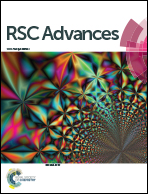Tailoring the hard domain cohesiveness in polyurethanes by interplay between the functionality and the content of chain extender
Abstract
Crosslinked polyurethane–ureas based on a mixture of 4,4′-dibenzyl diisocyanate, poly(ethylene adipate) glycol, diethylene glycol (DEG) and trimethylol propane (TMP) were synthesized with various ratios of DEG and TMP. The combination within the network structure of the chemical crosslinks generated by TMP and the cohesive strength of urethane and urea groups, which provide physical crosslinking points, plays a special role in the mechanical and thermal properties. Fourier transform infrared (FTIR) spectroscopy indicated the distribution of hydrogen bonds in these networks. The extent of crosslinking was monitored through dynamic mechanical analysis (DMA), differential scanning calorimetry (DSC) and atomic force microscopy (AFM) and was found to be significantly influenced by the double function of TMP: plasticizer and crosslinker. The width and intensity of the glass transition region and the evolution of the storage modulus on the rubbery plateau region were analyzed in order to observe the trends in crosslinking and network homogeneity. The improved mechanical properties were generally accredited to the effect of crosslinking resulting from the high hydrogen bonding capability of the urea group in conjunction with the good rubber elasticity of the network.


 Please wait while we load your content...
Please wait while we load your content...